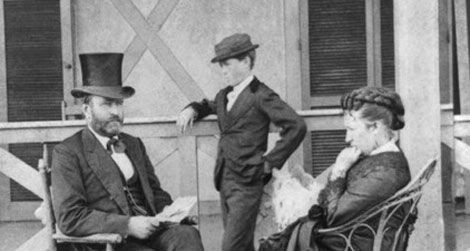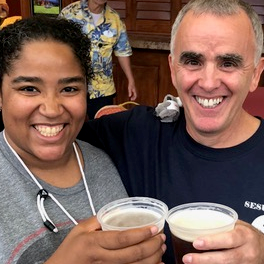
– Smithsonian
Hear ye! Hear ye! The Grant Applications portal is now open! Students, Faculty and High School teachers can find info here. If you work outside of academia you can find info here. As Ben Franklin would have said if he knew about the program, “Ready money can be found in the SESUG Grants. Apply today!” Read on for a behind the scenes look at the Grant program with the incoming Grant Lady, Charlotte Baker.

For over 13 years SESUG has been providing scholarships to the conference. Let me introduce you to the amazing person who will be overseeing that process, Charlotte Baker. Charlotte was the co-chair for the 2018 SESUG conference in St. Pete. Now she is taking over the Grant committee from the indomitable Barbara Okerson, conference chair 2011. Charlotte will be the new Grant Lady and like a cat lady, she feels strongly about the Grant program and takes care of her Grantees very well. Recently, Charlotte and I had a conversation about all things “Grant.”
Chuck: Hello Charlotte, it’s good to see you. You’re looking wonderful today!
Charlotte: Thank you, Chuck. It’s good to see you, too.
Chuck: The Grant program has been around a long time, but with so many people attending the conference, why do we need it?
Charlotte: Many new SAS users can benefit a great deal from attending a conference like this in terms of long-term SAS use, but they can’t afford to go. The Grant program is a mechanism to help those people get to SESUG who otherwise couldn’t by giving reduced registration and hotel rates, and an opportunity for travel stipends. We want new people and new ideas!
Chuck: You say they can benefit. Why is the conference good for grantees?
Charlotte: Grantees receive all the usual good stuff when they attend SESUG plus a built-in network within the network for longer term support. Grantees also get to see a bit of the inner workings through volunteering during the conference. What’s not good about that?
Chuck: I’ve seen the budget and I know that the Grant program is expensive. Who pays for the grants?
Charlotte: SAS Institute pays for most of the grants and SESUG pays for the rest through the general conference budget. It is a big investment but totally worth it.
Chuck: It sounds like a great program. Do users think so? Do many people apply for the grants?
Charlotte: It depends year to year. We always get more applications than we can fund but are really hoping for at least 20 applications for each of our grant categories this year for competitiveness. We usually get more student and professional development applications than faculty applications. Sometimes our timing for the applications are weird for academics and people miss the messages.
Chuck: Hmm, that’s not good that they miss the message. What’s going on and what would you tell them?
Charlotte: The summer break is what’s going on. Students, Faculty and High School teachers are focused on finishing classes up. And then they may go on summer break. By the time they get back it’s too late for them to apply since applications close in July. [Ed note: July 8th] I recommend that they take some time right now and fill out the application and get it in. Don’t forget student ID’s, pictures and all that other stuff, too.
Chuck: How do you decide who gets the grants? Is there a statistical model?
Charlotte: Wouldn’t that be neat?! We really go through and look at the people that are applying and why they want to come to SESUG. We rank the applicants based on their responses. Our preference is people who are presenting a paper and we pick applicants from the Southeast and Northeast (old NESUG territory) first and second. We also really pay attention to whether you can come to the whole conference (or at least most of it). While we do get applications from previous grantees (who we love!), only those who have not gotten a grant in that category before can be picked.
Chuck: What is expected of the grantees at the conference?
Charlotte: Show up. Learn. Volunteer. Meet people. Have fun!
Chuck: It sounds like a successful program. Are there any success stories for the grant program?
Charlotte: All the previous grantees are fantastic success stories. The current Executive Committee has two former grantees (myself included) and many of our section chairs for operations and academics have been grantees before. It is always great when they like it enough to come back and help move this all-volunteer organization forward.
Chuck: Now most importantly, “Who is buried in Grant’s tomb?”
Charlotte: I really hope old Ulysses and his wife haven’t absconded!


